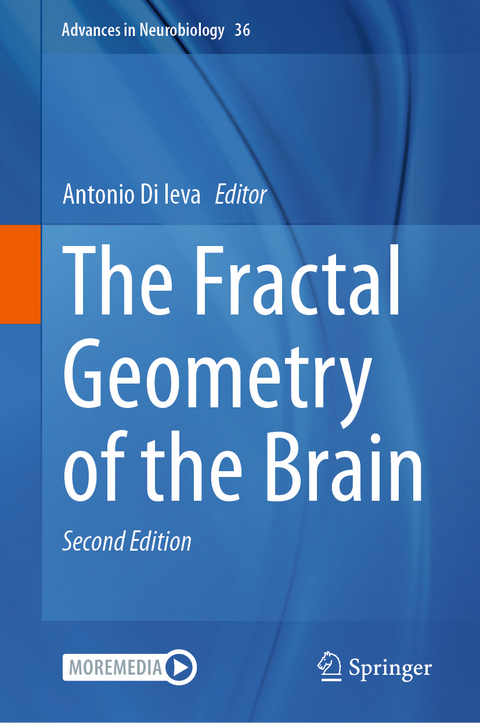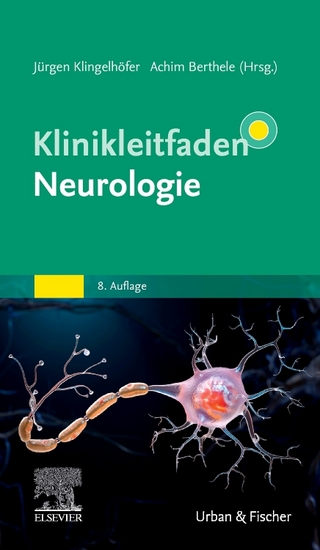
The Fractal Geometry of the Brain
Springer International Publishing (Verlag)
978-3-031-47605-1 (ISBN)
Antonio Di Ieva, MD, PhD, FRACS, is Professor of Neurosurgery at Macquarie Medical School, Macquarie University, Sydney, Australia; Professor of Neurosurgery, Ministry of Education, University and Research, Italy; Associate Professor of Neuroanatomy, Medical University of Vienna, Austria; Fellow of the Australian Research Council (ARC) and of the Royal Australasian College of Surgeons (RACS); Consultant Neurosurgeon, Macquarie Neurosurgery, Sydney, Australia; Founder and Head of the Computational NeuroSurgery (CNS) Lab at Macquarie University, Sydney, Australia; Neuroscience & AI Program Leader, Centre for Applied Artificial Intelligence, Macquarie University, Sydney, Australia
Part I. Introduction to Fractal Geometry and its Applications to Neurosciences.- The Fractal Geometry of the Brain: An Overview.- 2. Box-Counting Fractal Analysis: A Primer for the Clinician.- Tenets and Methods of Fractal Analysis (1/f noise).- 4. Tenets, Methods and Applications of Multifractal Analysis in Neurosciences.- Part II. Fractals in Neuroanatomy and Basic Neurosciences.- Fractals in Neuroanatomy and Basic Neurosciences: An Overview.- Morphology and Fractal-Based Classifications of Neurons and Microglia.- The Morphology of the Brain Neurons: Box-counting Method in Quantitative Analysis of 2D Image.- Neuronal Fractal Dynamics.- Does a Self-Similarity Logic Shape the Organization of the Nervous System?.- Fractality of Cranial Sutures.- The Fractal Geometry of the Human Brain: An Evolutionary Perspective.- Part III. Fractals in Clinical Neurosciences.- Fractal Analysis in Clinical Neurosciences: An Overview.- Fractal Analysis in Neurological Diseases.- Fractal Dimension Studiesof the Brain Shape in Aging and Neurodegenerative Diseases.- Fractal Analysis in Neurodegenerative Diseases.- Fractal Analysis of the Cerebrovascular System Physiopathology.- Fractal and Chaos in the Hemodynamics of Intracranial Aneurysms.- Fractal-based Analysis of Arteriovenous Malformations (AVMs).- Fractals in Neuroimaging.- Computational Fractal-Based Analysis of MR Susceptibility Weighted Imaging (SWI) in Neuro-oncology and neurotraumatology.- Texture Estimation for Abnormal Tissue Segmentation in Brain MRI.- Tumor Growth in the Brain: Complexity and Fractality.- Histological Fractal-based Classification of Brain Tumors.- Computational Fractal-based Analysis of the Brain Tumors Microvascular Networks.- Fractal analysis of electroencephalographic time-series (EEG-signals).- On Multiscaling of Parkinsonian Rest Tremor Signals and Their Classification.- Fractals and Electromyograms.- Fractal analysis in Neuro-ophthalmology.- Fractals in Affective and Anxiety Disorders.-Fractal Fluency: An Intimate Relationship Between the Brain and Processing of Fractal Stimuli.- Part IV. Computational Fractal-Based Neurosciences.- Computational Fractal-based Neurosciences: An Overview.- ImageJ in Computational Fractal-based Neuroscience: Pattern Extraction and Translational Research.- Fractal Analysis in MATLAB: A Tutorial for Neuroscientists.- Methodology to Increase the Computational Speed to Obtain the Fractal Dimension Using GPU Programming.- Fractal Electronics as a Generic Interface to Neurons.- Fractal Geometry meets Computational Intelligence: Future Perspectives.
| Erscheinungsdatum | 15.03.2024 |
|---|---|
| Reihe/Serie | Advances in Neurobiology |
| Zusatzinfo | XXIX, 1004 p. 285 illus., 211 illus. in color. |
| Verlagsort | Cham |
| Sprache | englisch |
| Maße | 155 x 235 mm |
| Themenwelt | Medizin / Pharmazie ► Medizinische Fachgebiete ► Neurologie |
| Medizin / Pharmazie ► Studium | |
| Naturwissenschaften ► Biologie ► Humanbiologie | |
| Schlagworte | brain • Cognitive Neurosciences • Complexity • Computational Neuroscience • Fractal • fractal analysis • Fractal Geometry • neuroimaging • Neurology • Neuro-oncology • Neuropathology • Neuropsychology • Neuroradiology • Neuroscience • neurosurgery |
| ISBN-10 | 3-031-47605-0 / 3031476050 |
| ISBN-13 | 978-3-031-47605-1 / 9783031476051 |
| Zustand | Neuware |
| Informationen gemäß Produktsicherheitsverordnung (GPSR) | |
| Haben Sie eine Frage zum Produkt? |
aus dem Bereich


